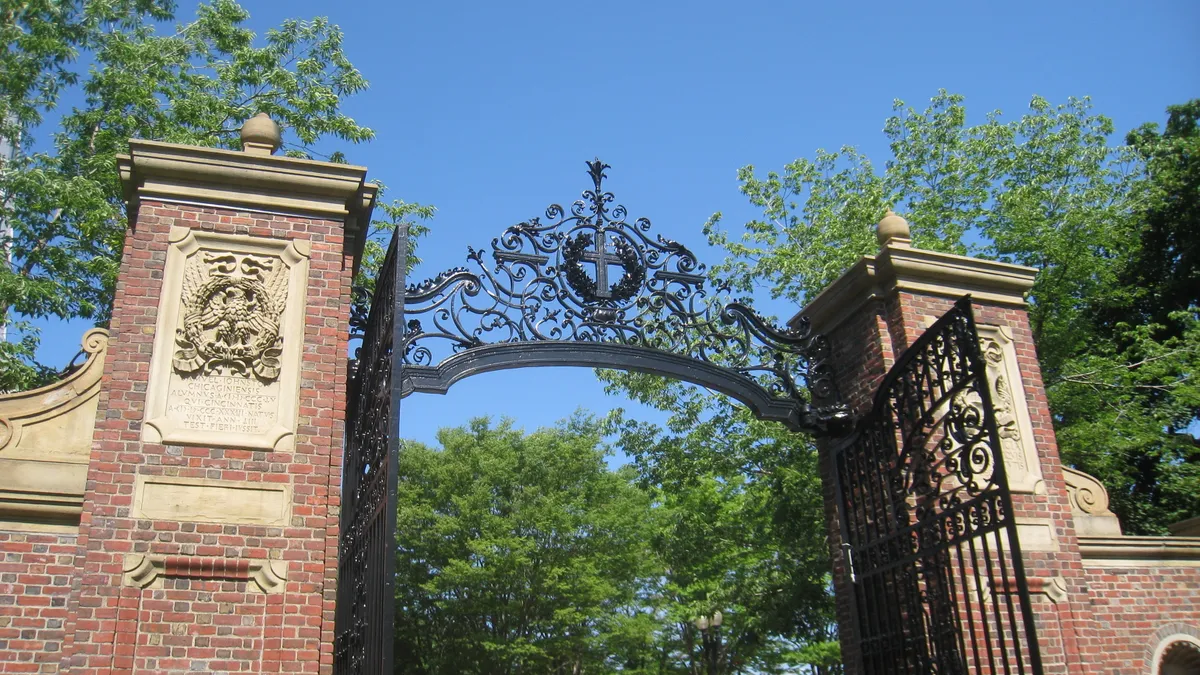Dive Brief:
- The U.S. Department of Treasury published proposed regulations that shed light on a new tax on the endowments of well-off private colleges.
- In 2017, Congress passed a 1.4% levy on college endowment returns as part of the Republican-led tax overhaul. It affects only private institutions with at least 500 tuition-paying students — of whom more than 50% live in the U.S. — and $500,000 in endowment funds per student.
- Colleges have been asking for clarity on their obligations under the tax, though some observers say the proposed rules don't answer their questions. The proposal will be open to public comment for three months.
Dive Insight:
The proposed regulations lay out which institutions will have to pay the new levy and how their assets and income will be taxed. Income affected colleges would be taxed on includes that from interest, dividends and rentals.
The Internal Revenue Service estimates it will cost roughly 40 institutions about $123 million annually. However, higher ed leaders say some of the regulation's details aren't yet clear.
"They're enormously complicated," Steven Bloom, director of government and public affairs at the American Council on Education, told Education Dive. "It's going to take some time to unpack them and for schools to determine whether they are, in fact, covered by the excise tax and then how they would comply."
The most well-heeled institutions are likely to be affected, Bloomberg reported. Those include elite colleges such as Harvard University, Princeton University and Williams College.
Harvard — which has the largest endowment in the U.S. at roughly $39 billion — would have paid around $43 million in taxes on its endowment returns if the new tax had been in effect in 2017, according to The Harvard Crimson, the college's student-led newspaper.
Many college leaders have been outspoken critics of the levy. Others have continued to decry the proposal, arguing it will harm institutions' ability to pay for research and student scholarships, as well as create a buffer against an economic downswing.
"It was a misguided idea when it was being passed, and the proposed regulations serve as an exclamation mark on how bad the policy is," Bloom said.
For one, the levy will pay for corporate tax cuts instead of higher ed funding, The Washington Post reported. It also could heighten colleges' administrative burden in order to comply with the regulations.
However, others argue that taxed schools will still have the flexibility to offer students scholarships and other aid. And some lawmakers and observers suggest future legislation governing taxes on endowment returns could incentivize institutions to lower tuition.
In the meantime, colleges may be seeking ways to skirt the tax. Some could drop their enrollment below 500 students, while others could raise it in order to lower their endowment assets per student, wrote Peter Hinrichs, senior research economist with the Federal Reserve Bank of Cleveland, in a blog post last year.
Because the $500,000 threshold is not indexed to inflation, institutions currently unaffected soon could be, Bloom noted. Others worry lawmakers will change the criteria to include more institutions, such as by extending the tax to public colleges.
"Those changes would not be very difficult to do," Bloom said. "It just involves changing a few words or numbers here and there."














